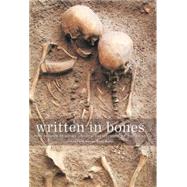
Note: Supplemental materials are not guaranteed with Rental or Used book purchases.
Purchase Benefits
What is included with this book?
Paul Bahn, Ph.D. studied archeology at Cambridge University. For this book he worked with a team of 16 contributors from universities around the world. His numerous books, written alone or with a co-author, include Ancient Places, Images of the Ice Age, Journey through the Ice Age and The Cambridge Illustrated History of Archaeology, Tombs, Games and Mummies.
| Introduction | 6 | (3) | |||
|
9 | (36) | |||
|
45 | (38) | |||
|
83 | (52) | |||
|
135 | (30) | |||
|
165 | (21) | |||
| Index | 186 | (2) | |||
| Bibliography | 188 | (3) | |||
| Picture Credits | 191 | (1) | |||
| Contributors | 192 |
The New copy of this book will include any supplemental materials advertised. Please check the title of the book to determine if it should include any access cards, study guides, lab manuals, CDs, etc.
The Used, Rental and eBook copies of this book are not guaranteed to include any supplemental materials. Typically, only the book itself is included. This is true even if the title states it includes any access cards, study guides, lab manuals, CDs, etc.